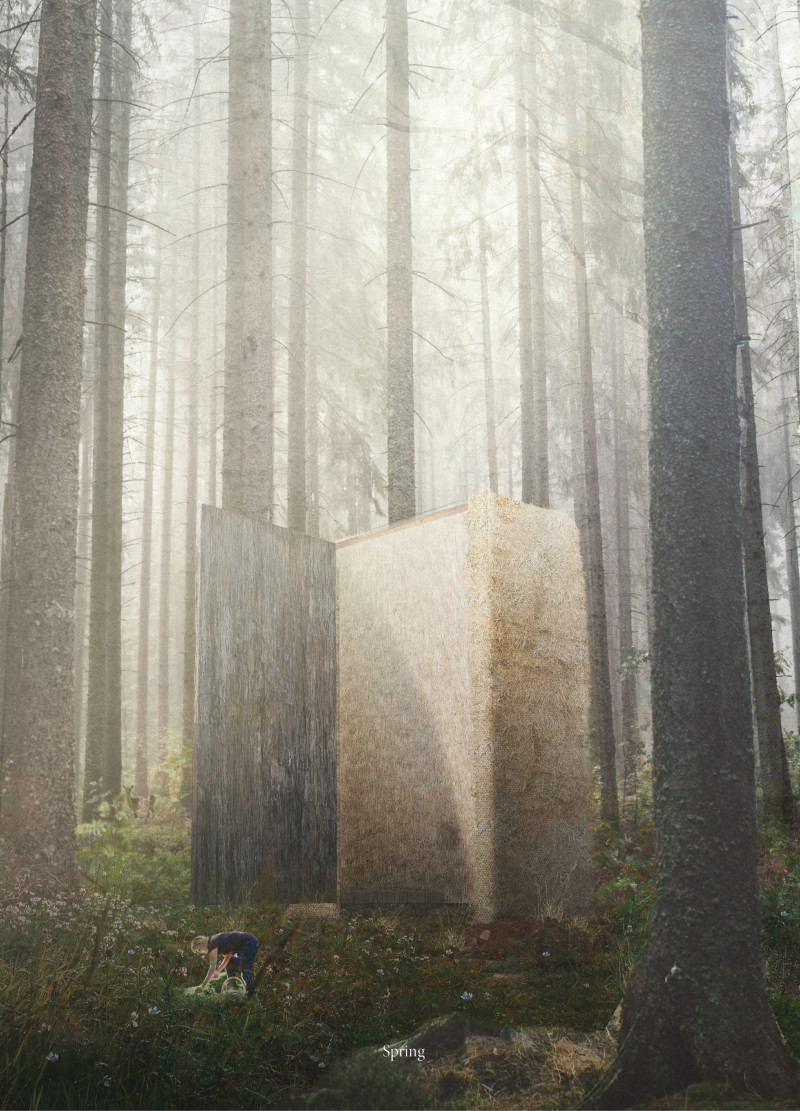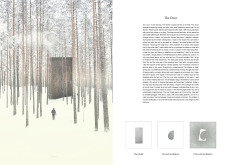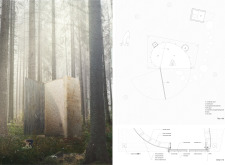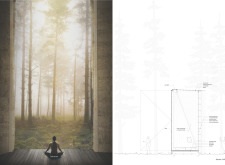5 key facts about this project
Sustainability is a core aspect of this design. The cabin is constructed using environmentally friendly materials, including compressed straw bales for insulation, which offer effective temperature control while minimizing ecological impact. The wooden framework selected reflects local building traditions and reinforces the connection to the forest environment. The use of a metal roof contributes to durability, ensuring the structure withstands environmental challenges.
The design prioritizes natural light, employing carefully placed openings and skylights that create dynamic interactions with the indoor spaces throughout the day. Interior areas are tailored for specific functions, including spaces designated for meditation, contemplation, and utility, all while maintaining a cohesive flow. The layout encourages movement and reflection, allowing users to engage fully with their surroundings.
Architectural Simplicity and Seasonal Adaptation
What sets "The Door" apart from typical retreats is its focus on seasonal adaptations within the design. The project embodies different visual themes that respond to the changes in the environment, such as distinct characteristics for winter, spring, summer, and fall. This thoughtful approach ensures that the cabin remains relevant year-round, offering varied experiences based on the time of year.
Architectural features are intentionally minimal, allowing the users to connect with the forest rather than distract from it. For example, the design incorporates natural wood flooring and a mesh membrane to facilitate ventilation while fostering a seamless transition between indoor and outdoor environments. This encourages users to embrace the surrounding nature rather than retreat back into the structure.
Functional Integration and Unique Design Elements
The architectural layout integrates functionality with aesthetic simplicity. The project incorporates distinct features such as community-oriented spaces which allow occupants to gather and interact, fostering a sense of belonging within the isolation of the forest. This is in contrast to typical designs that may prioritize solitary experiences without promoting community engagement.
High-performance materials like rubber packing and water membranes are employed to ensure the structure's longevity and resilience against the elements. These choices reflect a pragmatic understanding of environmental dynamics, demonstrating how design and materiality can optimize user comfort while adhering to sustainable practices.
The project "The Door" stands as a thoughtful exploration of architecture that invites users to engage deeply with their environment. To gain deeper insights, explore elements such as architectural plans, architectural sections, architectural designs, and architectural ideas through the project presentation.


























